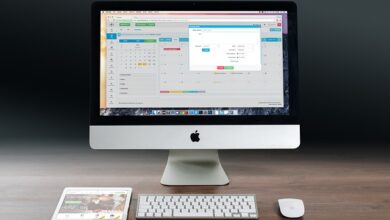How to Become a Data Analyst Without a Degree: A Comprehensive Guide

In today’s data-driven world, the demand for skilled data analysts is skyrocketing. Companies across industries rely on data to make informed decisions, optimize processes, and drive innovation. While many data analysts hold degrees in fields like statistics, computer science, or business, it’s entirely possible to break into this lucrative career without a formal degree. With the right skills, mindset, and strategy, you can carve out a successful path as a data analyst. In this guide, we’ll walk you through the steps to become a data analyst without a degree.
1. Understand the Role of a Data Analyst
Before diving into the process, it’s essential to understand what a data analyst does. Data analysts are responsible for collecting, processing, and analyzing data to help organizations make data-driven decisions. Their tasks typically include:
- Cleaning and organizing raw data
- Creating visualizations (charts, graphs, dashboards)
- Identifying trends and patterns in data
- Communicating insights to stakeholders
- Collaborating with teams to solve business problems
While technical skills are crucial, soft skills like critical thinking, problem-solving, and communication are equally important.
2. Assess Your Current Skills and Identify Gaps
Start by evaluating your existing skill set. Do you have any experience with spreadsheets, databases, or programming? If not, don’t worry—data analysis is a learnable skill. Here’s how to assess where you stand:
a. Technical Skills
- Spreadsheets: Are you comfortable using Excel or Google Sheets?
- Programming: Do you know Python, R, or SQL?
- Data Visualization: Have you used tools like Tableau, Power BI, or Matplotlib?
b. Analytical Skills
- Can you interpret data and draw meaningful conclusions?
- Are you comfortable working with numbers and statistics?
c. Soft Skills
- Are you detail-oriented and good at problem-solving?
- Can you communicate complex ideas clearly?
Once you’ve identified your strengths and weaknesses, create a learning plan to address the gaps.
3. Learn the Essential Tools and Technologies
To succeed as a data analyst, you need to master certain tools and technologies. Fortunately, there are countless free and paid resources available online to help you learn these skills.
a. Master Spreadsheets
Excel and Google Sheets are foundational tools for data analysis. Learn how to:
- Use formulas and functions (e.g., VLOOKUP, IF statements)
- Create pivot tables and charts
- Perform basic data cleaning and manipulation
b. Learn Programming Languages
Two of the most widely used programming languages in data analysis are Python and R. Start with Python, as it’s beginner-friendly and versatile.
- Python: Focus on libraries like Pandas (for data manipulation), NumPy (for numerical computations), and Matplotlib/Seaborn (for visualization).
- R: Ideal for statistical analysis and advanced data modeling.
c. Get Familiar with SQL
SQL (Structured Query Language) is essential for querying databases and extracting data. Learn how to:
- Write SELECT, JOIN, and WHERE queries
- Filter, sort, and aggregate data
- Work with relational databases
d. Explore Data Visualization Tools
Tools like Tableau and Power BI allow you to create interactive dashboards and reports. These skills are highly valued in the industry.
4. Build a Strong Foundation in Statistics and Mathematics
Data analysis relies heavily on statistics and mathematics. You don’t need an advanced degree, but understanding key concepts will help you interpret data effectively. Focus on:
- Descriptive statistics (mean, median, mode, standard deviation)
- Probability and distributions
- Hypothesis testing
- Correlation and regression analysis
There are many free online courses and tutorials that cover these topics in a practical, hands-on way.
5. Gain Practical Experience Through Projects
Employers value real-world experience over theoretical knowledge. Start building a portfolio by working on projects that demonstrate your skills.
a. Use Public Datasets
Websites like Kaggle, UCI Machine Learning Repository, and Data.gov offer free datasets for practice. Choose datasets that interest you and analyze them to uncover insights.
b. Solve Real-World Problems
Think about challenges businesses face and how data could help solve them. For example:
- Analyze sales data to identify trends
- Predict customer churn using historical data
- Optimize marketing campaigns based on performance metrics
c. Document Your Process
For each project, document your approach, tools used, and findings. This will serve as evidence of your skills when applying for jobs.
6. Showcase Your Work with a Portfolio
A strong portfolio is one of the best ways to prove your capabilities as a data analyst. Include the following in your portfolio:
- Project Descriptions: Explain the problem you solved and the methods you used.
- Visualizations: Include charts, graphs, and dashboards to illustrate your findings.
- Code Samples: Share snippets of your Python or SQL code to demonstrate technical proficiency.
- Insights: Highlight actionable insights you derived from the data.
Consider creating a personal website or using platforms like GitHub or Kaggle to host your portfolio.
7. Network and Build Connections
Networking is crucial for landing freelance gigs or full-time roles, especially if you don’t have a degree. Here’s how to expand your professional network:
a. Join Online Communities
Participate in forums like Reddit’s r/datascience, Stack Overflow, or LinkedIn groups. Engage in discussions, ask questions, and share your knowledge.
b. Attend Meetups and Webinars
Look for local or virtual events focused on data analytics, machine learning, or tech careers. These are great opportunities to meet industry professionals.
c. Leverage Social Media
Use LinkedIn to connect with data analysts, recruiters, and hiring managers. Share your projects, write posts about your learning journey, and engage with others’ content.
8. Pursue Certifications to Boost Credibility
While a degree isn’t mandatory, certifications can enhance your credibility and demonstrate your commitment to the field. Some popular options include:
- Google Data Analytics Professional Certificate (via Coursera)
- IBM Data Analyst Professional Certificate (via Coursera)
- Microsoft Certified: Data Analyst Associate
- Tableau Desktop Specialist Certification
These certifications often come with hands-on projects that further strengthen your portfolio.
9. Apply for Entry-Level Jobs or Freelance Gigs
Once you’ve built your skills and portfolio, start applying for entry-level positions or freelance opportunities. Tailor your resume and cover letter to highlight your relevant experience and achievements.
a. Target Junior Roles
Look for titles like “Junior Data Analyst,” “Data Intern,” or “Business Analyst.” These roles often require less experience and provide valuable on-the-job training.
b. Explore Freelancing Platforms
Websites like Upwork, Fiverr, and Toptal allow you to find freelance data analysis projects. Start small and gradually build your reputation.
c. Consider Contract or Remote Work
Many companies hire contract workers or remote employees for short-term data analysis projects. This can be a great way to gain experience.
10. Stay Curious and Keep Learning
The field of data analysis is constantly evolving, so continuous learning is key to staying competitive. Follow industry blogs, take advanced courses, and experiment with new tools and techniques.
a. Learn Advanced Topics
Once you’re comfortable with the basics, explore areas like machine learning, big data, or cloud computing (e.g., AWS, Azure).
b. Participate in Competitions
Platforms like Kaggle host data science competitions where you can test your skills against others and win prizes.
c. Seek Feedback
Ask peers or mentors to review your work and provide constructive criticism. This will help you improve and grow.



